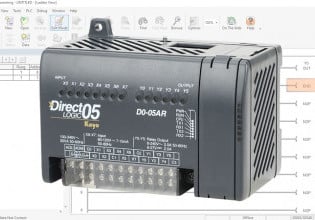Hi all.
I have a dedicated network for our controls devices. All switches are AB Stratix 5700 and the network has worked perfectly for 7 years. We have 88 devices on it, 29 of which are Modbus slaves. Recently I added 4 new units called Maxcess Spyder Plus tension control modules, which have a web interface and also communicate via Modbus. All have unique IPs, and slave IDs, but after a few days, 3 of the 4 stop listening on ports 80 & 502, eventually after a week or two, the last one also does the same.
Rebooting them (power cycle) restores the ports instantly. They are on a machine where they connect to an 8 port hub, then on one ethernet cable to a dedicated port on a Stratix switch. No other devices on that segment / port. When restarted, they function perfectly with no errors, until they drop off the network one by one.
They still respond to pings, and ARP requests (using AngryIP scanner identifies when they close ports / no longer listen) - this is baffling. No other devices exhibit this behaviour and the OEM has been unable to shed any light on this. Physically the devices work locally, just not over the network after they stop listening of course.
The last device to stop working, lasts about a week where the other identical units fail within a day or two. Eventually none work. Only power cycling brings them back online. Any ideas?
I have a dedicated network for our controls devices. All switches are AB Stratix 5700 and the network has worked perfectly for 7 years. We have 88 devices on it, 29 of which are Modbus slaves. Recently I added 4 new units called Maxcess Spyder Plus tension control modules, which have a web interface and also communicate via Modbus. All have unique IPs, and slave IDs, but after a few days, 3 of the 4 stop listening on ports 80 & 502, eventually after a week or two, the last one also does the same.
Rebooting them (power cycle) restores the ports instantly. They are on a machine where they connect to an 8 port hub, then on one ethernet cable to a dedicated port on a Stratix switch. No other devices on that segment / port. When restarted, they function perfectly with no errors, until they drop off the network one by one.
They still respond to pings, and ARP requests (using AngryIP scanner identifies when they close ports / no longer listen) - this is baffling. No other devices exhibit this behaviour and the OEM has been unable to shed any light on this. Physically the devices work locally, just not over the network after they stop listening of course.
The last device to stop working, lasts about a week where the other identical units fail within a day or two. Eventually none work. Only power cycling brings them back online. Any ideas?






